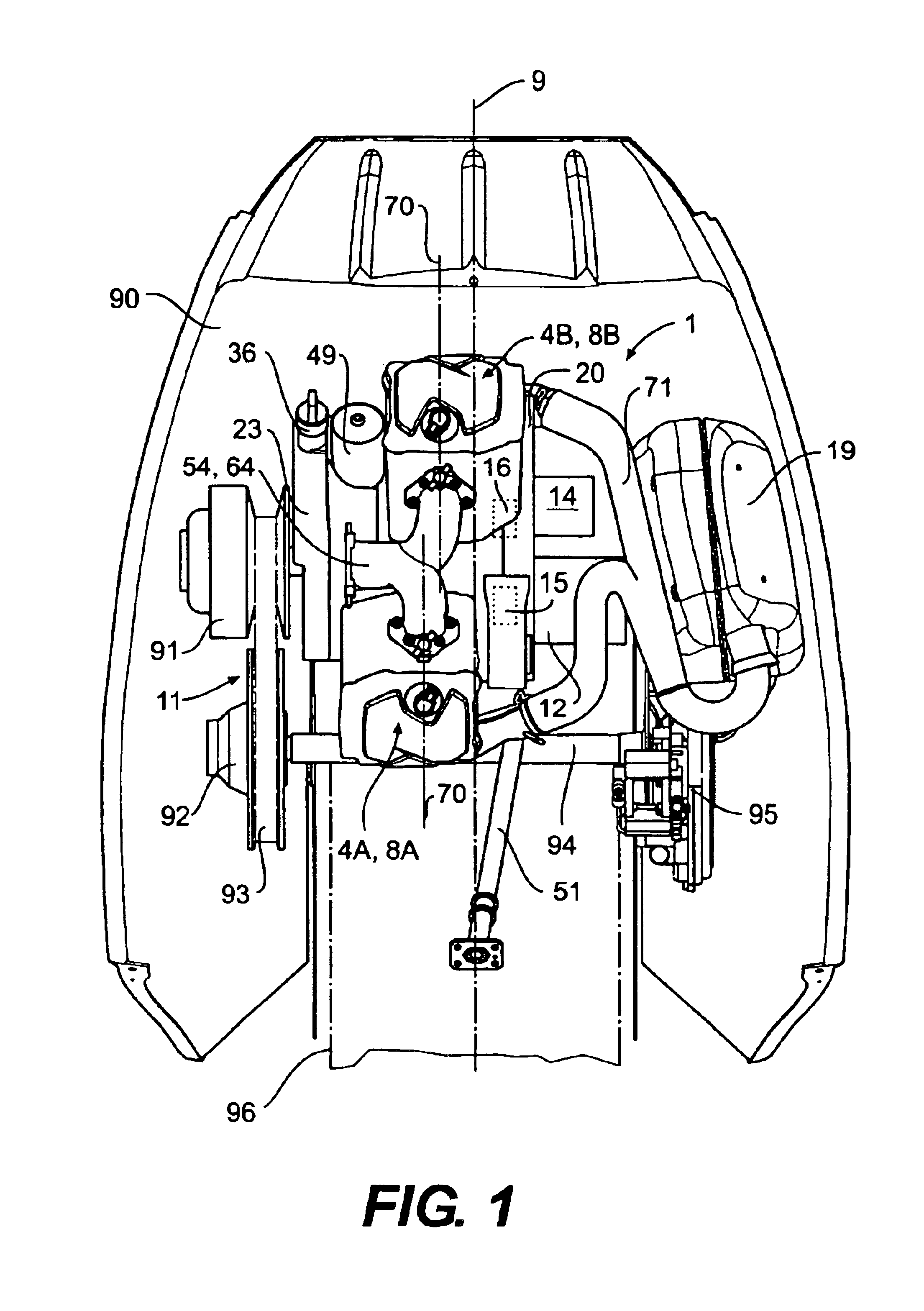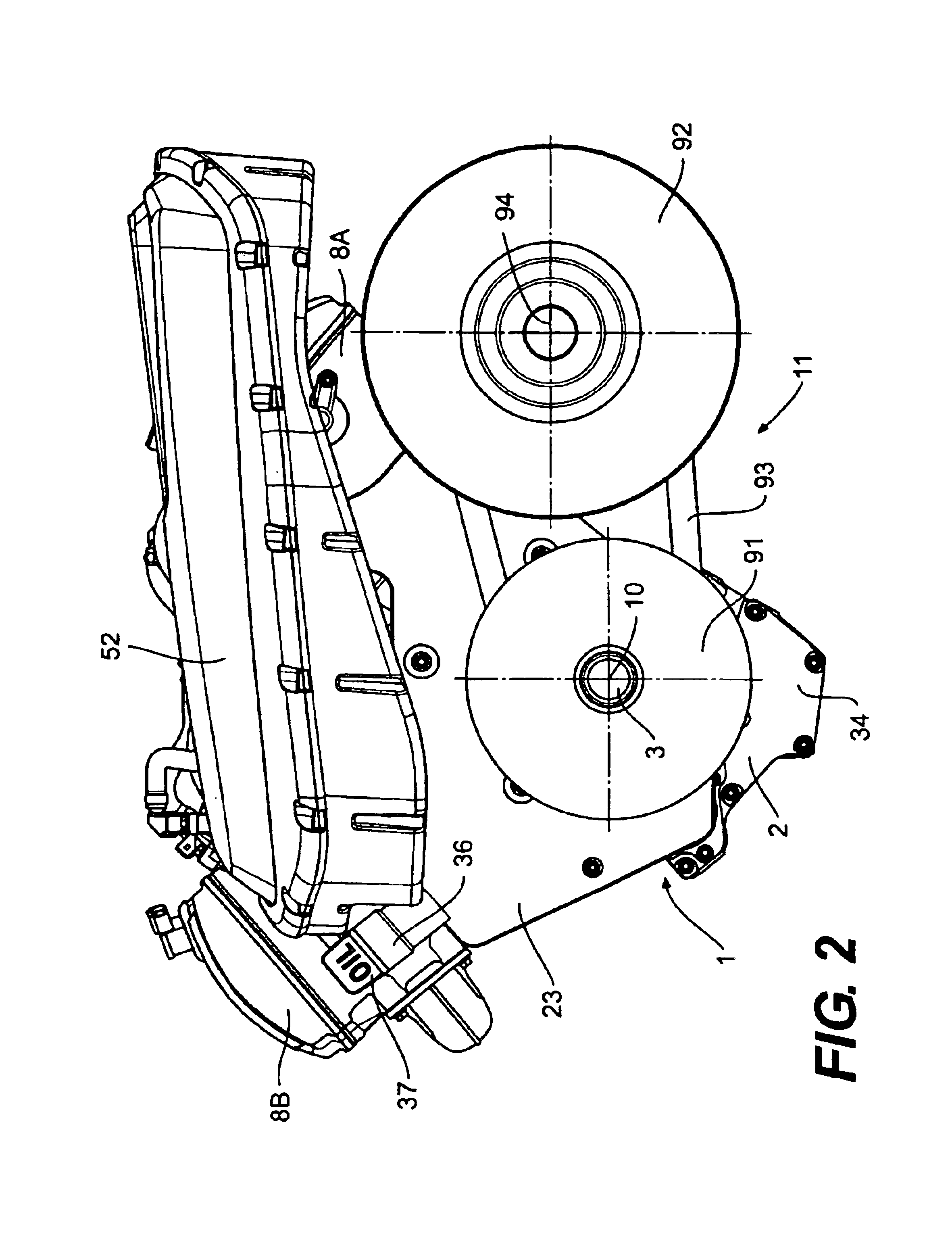Engine arrangement for a four cycle engine
a four-cycle engine and engine technology, applied in the direction of machines/engines, jet propulsion mounting, transportation and packaging, etc., can solve the problems of high production cost, inability to meet the needs of snowmobiles, and high production cost, so as to improve the manner in which snowmobiles handle, improve the charging effect, and reduce the inertia of snowmobiles
- Summary
- Abstract
- Description
- Claims
- Application Information
AI Technical Summary
Benefits of technology
Problems solved by technology
Method used
Image
Examples
Embodiment Construction
[0059]A four-cycle engine having one or more cylinders 4 will now be described in greater detail. A two cylinder engine 1 in accordance with the present invention is illustrated in FIG. 1. A single cylinder engine 100 in accordance with the present invention is illustrated in FIG. 9. As shown in FIG. 1, the engine 1 is mounted to a chassis of a snowmobile 90. The engine 100 may be similarly mounted in the chassis of the snowmobile 90. The present invention is not limited to four-cycle engines used in snowmobiles; rather, it is intended that the engines 1 and 100 disclosed herein and any variations thereof may be used in multiple vehicles including but not limited to three-wheeled vehicles, ATVs, motorcycles, and watercraft.
[0060]The four-cycle engine 1 having a pair of cylinders 4A and 4B will now be described in greater detail. Although a pair of cylinders 4A and 4B are disclosed, the present invention is not limited to a pair of cylinders; rather, it is contemplated that a single ...
PUM
 Login to View More
Login to View More Abstract
Description
Claims
Application Information
 Login to View More
Login to View More - R&D
- Intellectual Property
- Life Sciences
- Materials
- Tech Scout
- Unparalleled Data Quality
- Higher Quality Content
- 60% Fewer Hallucinations
Browse by: Latest US Patents, China's latest patents, Technical Efficacy Thesaurus, Application Domain, Technology Topic, Popular Technical Reports.
© 2025 PatSnap. All rights reserved.Legal|Privacy policy|Modern Slavery Act Transparency Statement|Sitemap|About US| Contact US: help@patsnap.com



